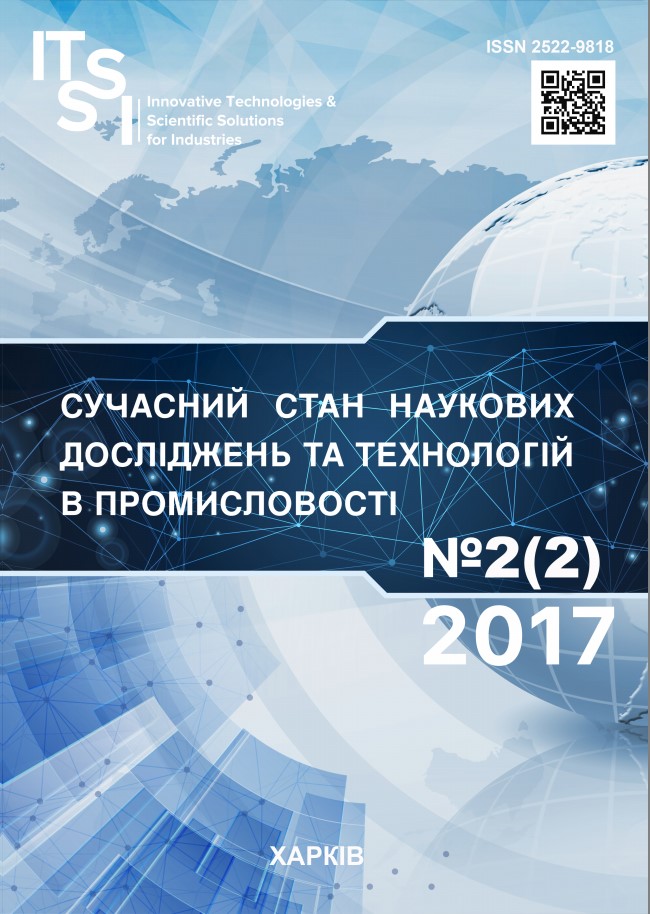FORMALIZING THE TECHNOLOGY OF MANAGEMENT AS А CONSTITUENT OF THE ORGANIZATION CORE CAPABILITIES
DOI:
https://doi.org/10.30837/2522-9818.2017.2.116Keywords:
management technology, stage and operation of the management process, competitive advantage, monitoringAbstract
The article considers technology as a component of organization core capabilities. The technology is broadly described as a set of formalized knowledge. The main task of any technology is framed; this task involves determining the structure of a process and the methods by which its individual operations are carried out. The term “management technology” is defined. As opposed to the available definitions, the new one emphasizes a set of formalized knowledge about the implementation of the process of management in regard to the composition and sequence of its stages and operation, the list of input and output information on operations, the description of methods for obtaining and transforming input information and professional qualification requirements to managerial staff. It is proved that management technology allows managers to execute clearly coordinated actions without additional instructions via formalizing. It is justified that the knowledge of management technology should be formalized according to the logical patterns of the management process and its stages, reflecting the structure of the process and the relationship among its components. Using a special form of an information model – the informogram of the management process is suggested as a way of formalizing; it contains information on the composition and methods of executing each stage and operation. The stage of the management process, that is monitoring, is formalized. The composition of strategic monitoring operations is determined; these operations are scanning the external environment of the direct action, interpreting information on the external environment of the direct action, scanning the external environment of the indirect influence, identifying significant weak signals, scripting, composing industrial success factors. The logical pattern of the implementation of strategic monitoring and its informogram are suggested. They make up the monitoring technology as the stages of the management process and appear as the formalized knowledge of its implementation. Thus, the organizational routine describing the sequence of standard operations which provide an opportunity to coordinate the activities of management personnel is obtained.
References
Teece, D., Pisano, G., Shuen, A. (1997), "Dynamic Capabilities and Strategic Management". Strategic Management Journal. Vol. 18. No. 7. Р. 509–533.
Grant, R. M. (2008) Contemporary strategic analysis [Sovremennyy strategicheskiy analiz]. St. Petersburg : Peter. 560 p.
Efremov, V. S., Khanykov, I. A. (2002), "The key competence of the organization as an object of strategic analysis" ["Klyuchevaya kompetentsiya organizatsii kak ob"yekt strategicheskogo analiza"]. Management in Russia and abroad. No. 2. P. 8–33.
Kuznetsova, I. O (2012), "Resource Approach as a Modern Paradigm of Strategic Management" ["Resursnyy pidkhid yak suchasna paradyhma stratehichnoho upravlinnya"]. Formuvannya rynkovoyi ekonomiky. Zb. nauk. Prats`. Part 1. KNEU. P. 507–514.
Porter, M. (2005), Competition. Moscow: Williams Publishing House. 608 p.
Vasilenko, A. V. (2005), Management of Sustainable Development: Monograph. Kiev : Center for Educational Literature. 648 p.
Henry, J. P. (1990), Making the technology-strategy connection. International Review of Strategic Management. Chichester. Wiley. 210 р.
Kuznetsova, I. O. (2014), "Engineering Paradigm as a Methodological Basis for Building a Management Process". Economics: realities of time. Scientific Journal. No. 2. P. 52–56.
Janster, P. Hussey, D. (2004), Analysis of strengths and weaknesses of the company: identifying strategic opportunities [Analiz sil'nykh i slabykh storon kompanii: opredeleniye strategicheskikh vozmozhnostey]. Moscow : Williams. 368 p.
Narayanan, V., Faye, L. (2006), "Analysis of the macro environment: what happens outside the industry" ["Analiz makrosredy: chto proiskhodit za predelami otrasli"]. MBA in Strategic Management. Moscow : Alpina Business Books. P. 287–321.
Rigland, D. (2008), Scenario planning for developing a business strategy [Stsenarnoye planirovaniye dlya razrabotki biznes-strategii]. Moscow: Williams. 560 p.
Boyatsis, R. (2008), Competent Manager. Model of effective work. Moscow : HIPPO. 352 p.
Downloads
How to Cite
Issue
Section
License
Copyright (c) 2018 Inna Kuznetsova

This work is licensed under a Creative Commons Attribution-NonCommercial-ShareAlike 4.0 International License.
Our journal abides by the Creative Commons copyright rights and permissions for open access journals.
Authors who publish with this journal agree to the following terms:
Authors hold the copyright without restrictions and grant the journal right of first publication with the work simultaneously licensed under a Creative Commons Attribution-NonCommercial-ShareAlike 4.0 International License (CC BY-NC-SA 4.0) that allows others to share the work with an acknowledgment of the work's authorship and initial publication in this journal.
Authors are able to enter into separate, additional contractual arrangements for the non-commercial and non-exclusive distribution of the journal's published version of the work (e.g., post it to an institutional repository or publish it in a book), with an acknowledgment of its initial publication in this journal.
Authors are permitted and encouraged to post their published work online (e.g., in institutional repositories or on their website) as it can lead to productive exchanges, as well as earlier and greater citation of published work.














